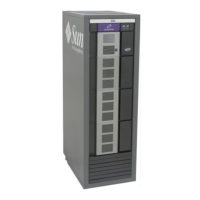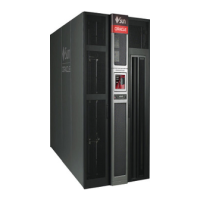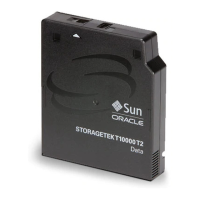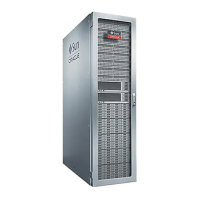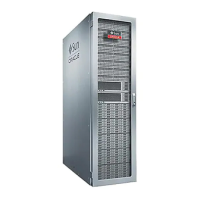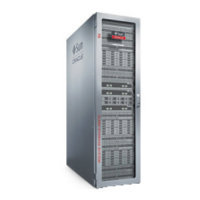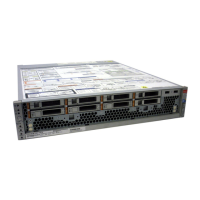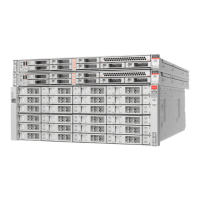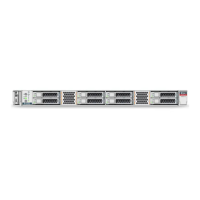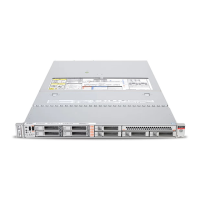Partitioning—General
250 SL150 Interface Reference Manual Julyl 2017
Partitioning—Feature
The SL150 library supports one to eight partitions.
The customer has the choice of a non-partitioned library or a library with one to eight
partitions.
When a partitioned library is desired, the administrator enables the Library
Partitioning option and adds the desired number of partitions. The administrator
configures each partition with the following:
• One or more magazines
• One or more tape drives
• A bridged drive
The mailslots are shared between all partitions. If the library is configured with the
Standard Mailslots, then all partitions share the Standard Mailslots. If the library is
configured with the Expanded Mailslots, then all partitions share the Expanded
Mailslots.
Refer to FIGURE B-1 as an example of how a customer might divide the library into
two partitions. In this example:
• Partition one owns the magazines on the left side of the library.
• Partition two owns the magazines on the right side of the library.
• Partition one owns the top drive in every module.
• Partition two owns the bottom drive in every module.
SCSI Element Addresses are assigned from left to right and top to bottom for each
partition. The example in FIGURE B-1 shows the SCSI Element Address for the
elements in both partition.
When the library is partitioned, all partitions report the mailslots with a starting SCSI
element address of 10.
The Mailslot Element count depends on the mailslot Configuration:
• The library reports 4 mailslot elements, when the library is configured with a
Standard Mailslot.
• The library reports 19 mailslot elements, when the library is configured with the
Expanded Mailslots.
Partitioning—Access Control
All hosts that issue commands to a bridged tape drive may also send commands to
the library partition. Commands are processed by the partition in which the bridged
drive resides. The host sends commands to the drive on LUN 0 and to the library on
LUN 1.
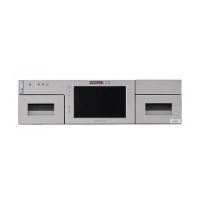
